Leaderboard
Popular Content
Showing content with the highest reputation on 2020-08-05 in all areas
-
So according to the Arthaśāstra (which is slightly out of our time frame), there are siege engines shooting projectiles at long distance: (Stationary) Sarvatobhadra is a cartwheel-shaped device that, when spun, hurls stones. (Stationary) Jāmadagnya is a device for shooting arrows. (Stationary and possibly) Bahumukha appears to refer to a position or a device on a tower from which arrows are shot. (Mobile) Āsphāṭima is a sort of catapult to hurl weapons. Incendiary and anti-incendiary siege engines: (Stationary) Saṃghāṭī is a machine for propelling incendiary devices to burn down turrets. (Stationary) Parjanyaka is a kind of fire engine to put out fires. A device to tear down pillars: (Mobile) Utpāṭima is a device for tearing down pillars. Pillars and beams based defense: (Stationary) Viśvāsaghātin consists of a beam placed outside the city walls that, when released, kills approaching soldiers. (Stationary) Bāhu consists of two pillars meant, when released, to crush those coming between them. (Stationary) Ūrdhvabāhu is a similar device, but it consists of only one pillar 50 Hastas long, and Ardhabāhu is a pillar half as high. (Mobile) Devadaṇḍa is a long pole to be released from the top of the defensive wall. Weapons hurled down to the enemy: (Stationary?) Yānaka is a rod one Daṇḍa long mounted on wheels and meant to be hurled at oncoming soldiers. (Mobile) Śataghni is a large pillar studded with sharp nails with a cartwheel at one end and intended to be hurled down at the enemies. Mobile light weapons for siege: Musalayaṣṭi is a pike made of hard Accacia wood. Hastivāraka is a pole with two or three prongs to ward off elephants. Spr̥ktalā is a club with sharp points. Kuddála, a kind of spade. Udghāṭima is a hammer-type device. Mudgara and Gada, hammer and mace discharged by a mechanical device. Other engines and devices: (Mobile) Tālavr̥nta is a fan-like device to hurl up dust against the enemy. (Mobile) Sūkarikā is a bag filled with cotton or wool to protect against stones hurled at the fortifications. (Mobile) Pāñcālika is a large wooden plank studded with sharp nails to be placed under the water in the moat.3 points
-
I've found that with these hero choices I can somewhat represent the various time periods of these civs. The Spartan hero Cleomenes removes hoplites and replaces them with phalangites, for instance. So, now with the Ptolemies, I've made Ptolemy I make the barracks train Macedonian phalangites, while the other 2 Ptolemaic heroes make the barracks train Egyptian phalangites.2 points
-
For all technical purposes, the Athenian faction does represent itself both during the Persian and Peloponnesian Wars given the fact that Pericles is represented as a hero.2 points
-
Hi everyone In this thread, I am going to present the SpiderMonkey upgrade work I have dedicated myself to since around a month. The aim of the thread is to explain what this upgrade is, why it is such a big change, and how I organized it. Please don't hesitate if you have comments or questions on anything! What is SpiderMonkey? SpiderMonkey is Mozilla's JavaScript engine, used first and foremost in Firefox. As you probably know, 0 A.D. is written in C++ but a large part of the gameplay is programmed in JavaScript, in order to be easily modifiable by mods. In order to execute the JavaScript code of the game, we include SpiderMonkey inside 0 A.D. (this is also called embedding). We are not the only ones to embed SpiderMonkey: for instance, GNOME (a well-known desktop environment) also embeds SpiderMonkey. I will often use the acronym SM to designate SpiderMonkey. No kinks here, just laziness to type! All about upgrading The advantage of embedding SM is that we don't have to take care of bugs or complicated JavaScript interpretation quirks: the folks at Mozilla have us covered. The downside, however, is that we are often out of the loop on the evolution of SpiderMonkey. In order to get the improvements of the engine, we have to upgrade it to recent versions, and this is very complicated. A big part of 0 A.D. is built upon SpiderMonkey, so when the latter changes, we have a lot of work to do to adapt. On top of this, SM upgrades are big changes. SM evolves along with Firefox (which has a new release every 8 weeks), but a stand-alone SM version is only released for embedders approximately once a year, when Firefox releases an Extended Support Release (a kind of Firefox LTS, which is, for instance, the one available on Debian). See the Firefox release calendar. The difficulty of upgrading is that, between two ESR releases, SM accumulates a lot of changes, and, whereas Firefox is always on top of them, other front-ends like 0 A.D. are faced with numerous breakages which could create bugs. Additionally, at 0 A.D. we haven't upgraded SM for a long time due to the difficulty of upgrading. Thus, it is also difficult to find information to upgrade to SM releases that are already outdated. It is not much easier to jump to the current SM release: so many changes have happened that we would be unable to make sense of them all at once. Current status I upgraded SM to version 38 in the ends of 2016. At that point, we were mostly up-to-date: version 45 was already out but it was still getting some fixes, and the stand-alone SM45 was not officially released. Nowadays, stand-alone SM versions are almost never officially released, however the SM development team has started to put out more and more news (see their brand new website) so things are certainly getting better. I couldn't work on the SM45 upgrade until the summer of 2019, and even then I left a few bugs in, that we will discover in the next posts I am releasing today the upgrade to SM52, which is a big one (hence the forum thread). That brings us to "only" two years late, as SM52 stopped receiving fixes in June of 2018. It is now necessary to work on the upgrade to SM60, SM68, and SM78 (the latter is still getting fixes until the beginning of 2021). However, I am going to work on other urgent things in August. I need to improve a lot of things with the CI, Jenkins and the handling of patches, and I would like to allow contributors to use git instead of SVN. I hope these exciting news will make you forgive me for delaying the SM upgrades In any case, I want to get back to further SM work as soon as possible. In this other thread, @Bellaz89 did the daunting work of making SM68 work with no previous knowledge of 0 A.D.! Many of you probably saw it. Bellaz was then very helpful and answered all my questions concerning the upgrade. His spadework, which cannot be committed just as-is, made the actual upgrade a breeze; and apparently there will be no big work to perform on 0 A.D. between SM52 and SM68, apart from an encoding change. We will see... Overview of the upgrade The upgrade can be found at this git branch. It is very big. Not counting the changes to SpiderMonkey itself, in the engine of 0 A.D., it consists of 145 files changed, with 2667 insertions(+) and 3243 deletions(-)! The objective is to split the massive change into independent parts, which can be understood, tested and committed one by one. I tried to make a majority of changes before the actual upgrade. That way, the upgrade itself is leaner. There are a few changes that I will be able to do just after the upgrade. Right now they are not uploaded, but I will announce them here later. I will also keep the posts below updated whenever I update or commit a part of the upgrade. You are probably wondering about the performance. From my few tests, the performance is identical in SM45 and SM52. If I'm not mistaken, the structural changes in SM52 pave the way for performance improvements in the next SM versions. On top of this, I have written a patch for a huge performance bottleneck (D2919) that was very apparent under SM52, and I have identified a couple of easy improvements that I will list in a ticket soon. Finally, Bellaz thinks that we have a few JIT optimizations (i.e. whether JavaScript code should be compiled, which costs some time, but makes it faster) which have become counterproductive. We could try and tweak our JIT options and see if we can improve the performance that way. You can already checkout the branch and test it! Now, to the details for the curious programmers!1 point
-
To be historically fair, the Silver Shield hypaspists upgrade should be exclusive to Alexander (and optionally, whenever a Maurya or some other Hindu faction is in play). The Somatophylakes (royal bodyguards) upgrade should be exclusive to both Philip and Alexander (maybe Demetrius?). These can be some of the hidden upgrades in the faction. I wholly admit that in Total War: Rome II the separation of perioikoi and Spartan phalangite is most likely not historically accurate, and is exclusive from the game. The Divide et Impera mod kind of fixed that historical error with only one kind of pikemen for the faction: Neohomoioi Phalangitai. Mea culpa. So the hoplites are still mandatory, but their gear should be "updated" to Hellenistic times. If you have any alternatives and/or more additions/revisions to the reformed Spartans, let me know. A separate (sub-)faction would've been better, since at least two more heroes (Agis IV, Nabis, you name them) can be implemented with this.1 point
-
I specifically said I wasn't talking about the mangonel or the trebuchet as suitable candidates. It is simply the idea of large wheels used either for the torsion of the sinew around an arm or for the traction of a rope that could fit with the description. In the case of an onager, there are only two axis where some wheels-shaped handles could fit (I am not sure of the word in English, a crank, a handle, a winch reel?): the axis for the torsion storing the energy for the propulsion or the axis to pull the arm and to load the weapon. Personally I would have imagine the "wheels" on the axis for the torsion, controlling the force of the propulsion. How? It is a stationary/immovable device and it is said only to have a shape like a cartwheel, not necessarily wheels to move the engine. The verb "to spin" can be used in several situation other than a rolling device. The only alternative I see is that it is nothing like a catapult but actually something to push stones from the fortifications. But the translation uses the word "hurl". Clearly, there are other devices mentioned as well throwing projectiles. Any bow-based catapult like an oxybeles would be as well reasonable hypothesis. Even a catapult like this is much more simpler: The same for a Chinese like trebuchet based on men traction, it could be as well a reasonable hypothesis due to its simplicity. I was simply curious about this cart-wheel shaped engine.1 point
-
Hmm, maybe. I honestly increased his speed so he can keep up with the Helot skirmisher and slinger. Here are some other hero cards:1 point
-
You don't need to register to github, you can just clone the repository. `git clone https://github.com/SciGuy42/Macedonia_0ad.git` Alternatively you can download the current HEAD zip: https://github.com/SciGuy42/Macedonia_0ad/archive/master.zip If you still want to collaborate without registering, just make your changes, commit and send the diff.1 point
-
Since people were organizing matches to play already I've started the final stage.1 point
-
@Stan` @andy5995 I think I managed to "undelete" Hyrule Conquest and Vision Sharing. However I cannot see the Korean pack anywhere.1 point
-
If you want to make improvements, I would be happy to give you access to the repo, just make a branch. The only thing you should not do is modify unique entities and trigger points. This campaign is heavily based on scripting, so what may appear to be random ruins or something may actually be important.1 point
-
The barracks has indeed an XP-trickle for garrisoned units, since rP23541.1 point
-
Does Brasidas' movement buff only apply to him or does it also apply to his formation? I feel like applying to his formation would be good too, considering he'd probably be in a phalanx in combat, so his speed is kind of lost.1 point
-
Actually we don't know the Romans invented it, but the earliest account is in Ammianus Marcellinus book. The account itself makes me think it is an older weapon because of the confusion between the names and the author noting that the reference to an onager comes from "modern times", in opposition to an other name. It could be, but how it would make it look like a "cart-wheel shape"? Personally I preferred a vertical design because it is more striking visually. Well, we have no indication they borrowed their siege engines from the Greeks. This is simply the most conservative and orthodox hypothesis. But if Jaina literature is correct, then a kind of catapult existed before the Mauryas (which is possible since the Chineses had one before the Han dynasty). This one?1 point
-
@fatherbushido @Nescio @LordGood @Sundiata and anyone else wanting to give his/her opinion. What about some stone-throwing catapults? Personally I think the cart-wheel shaped engine could be some kind of onager with two wheels twisted to make the torsion (like a ship's wheel to handle it). Some ideas of devices that could fit large wheels: Finally about the battering ram, I find interesting there is no mention of it. What about a hammer-like device instead? It would fit the same role.1 point
-
From: A History of Ancient and Early Medieval India: From the Stone Age to the 12th Century. Page 272. Available on lib gen. About Jaina literature: I think I have found the source: Trishashti Shalaka Purusha Caritra Having determined on this device and having put the god in his heart, the king, Śreṇika’s son, observed a three-day fast. Impelled by his penance and the friendship in a former birth, Śakra and Indra Camara came to him then. The Indra of the gods and the Indra of the Asuras said, “Sir, what do you wish?” He said, “If you are pleased, let Ceṭaka be killed.” Śakra said again: “Ask for something else. Ceṭaka is a co-religionist of mine, Certainly, I will not kill him. Nevertheless, king, I shall give you bodily protection, so that you will not be conquered by him.” He said, “Very well.” Indra Camara thought fit to make a battle which had big stones and a thorn,[2] and a second which had a chariot and a mace, leading to victory. In the first a pebble that had fallen would resemble a large stone. The thorn would be superior to a large weapon. In the second the chariot and the mace roam without an operator. The enemy-army, which had risen for battle, is crushed on all sides by them. Then the three, the Indra of the gods, the Indra of the Asuras, and the Indra of men, Kūṇika, fought with Ceṭaka’s army. A general, named Varuṇa, a grandson of the charioteer Nāga, an observer of the twelve vows, possessing right-belief, making a two-day fast, his mind always disgusted with worldly existence, having made a three-day fast at the end of the two-day fast, because of the attack on the king, strongly urged by King Ceṭaka himself, entered the battle, faithful to a promise, the chariot-mace being so irresistible. https://www.wisdomlib.org/jainism/book/trishashti-shalaka-purusha-caritra/d/doc216048.html This encyclopedia considers the same interpretation: https://onlinelibrary.wiley.com/doi/abs/10.1002/9781118455074.wbeoe133 I don't know if other Jaina texts gives the same account but with a less religious narrative.1 point
-
My guess is mod.io there were some addittions recently, maybe their server recently had to fix so I guess it corrupted cache or database.1 point
-
Hi andy, sorry I hadn't seen this topic, so I didn't know I had to review the mod. It's better to send me a PM (even though I can be long to answer, at least I know I have a mod to sign). I haven't deleted/rejected any mod, so I don't know what happened with yours. EDIT: I think one of the mod.io developers cleaned up all pending/incomplete mods from the whole platform.1 point
-
During the Theban–Spartan War of 378–362 BC: Diodorus Siculus, 15, 70, 1: From Sicily, Celts and Iberians to the number of two thousand sailed to Corinth, for they had been sent by the tyrant Dionysius to fight in alliance with the Lacedaemonians, and had received pay for five months. The Greeks, in order to make trial of them, led them forth; and they proved their worth in hand-to-hand fighting and in battles and many both of the Boeotians and of their allies were slain by them. Accordingly, having won repute for superior dexterity and courage and rendered many kinds of service, they were given awards by the Lacedaemonians and sent back home at the close of the summer to Sicily. Xen. Hell. 7.1.20: Just after these events had happened, the expedition sent by Dionysius to aid the Lacedaemonians sailed in, numbering more than twenty triremes. And they brought Celts, Iberians, and about fifty horsemen. On the following day the Thebans and the rest, their allies, after forming themselves in detached bodies and filling the plain as far as the sea and as far as the hills adjoining the city, destroyed whatever of value there was in the plain. And the horsemen of the Athenians and of the Corinthians did not approach very near their army, seeing that the enemy were strong and numerous. During the Peloponnesian war, about the Sicilian Expedition in 415-413 BC: Thuc. 6.90: "Thus stands the matter touching my own accusation. And concerning what we are to consult of, both you and I, if I know anything which you yourselves do not, hear it now. [2] We made this voyage into Sicily, first (if we could) to subdue the Sicilians, after them the Italians, after them, to assay the dominion of Carthage, and Carthage itself. [3] If these or most of these enterprises succeeded, then next we should have undertaken Peloponnesus, with the accession both of the Greek forces there and with many mercenary barbarians, Iberians and others of those parts, confessed to be the most warlike of the barbarians that are now. we should also have built many galleys besides these which we have already (there being plenty of timber in Italy); with the which besieging Peloponnesus round, and also taking the cities thereof with our land forces, upon such occasions as should arise from the land, some by assault and some by siege, we hoped easily to have debelled it and afterwards to have gotten the dominion of all Greece. [4] As for money and corn to facilitate some points of this, the places we should have conquered there, besides what here we should have found, would sufficiently have furnished us. Also Italian mercenaries on the side of Athenes against Sicily: Thuc. 7.33: About the same time came unto them also the aid of the Camarinaeans, five hundred men of arms, three hundred darters, and three hundred archers. Also the Geloans sent them men for five galleys, besides four hundred darters and two hundred horsemen. [2] For now all Sicily, except the Agrigentines, who were neutral, but all the rest, who before stood looking on, came in to the Syracusian side against the Athenians. [3] [Nevertheless], the Syracusians, after this blow received amongst the Siculi, held their hands and assaulted not the Athenians for a while. Demosthenes and Eurymedon, having their army now ready, crossed over from Corcyra and the continent with the whole army to the promontory of Iapygia. From thence they went to the Choerades, islands of Iapygia, and here took in certain Iapygian darters to the number of two hundred and fifty, of the Messapian nation. [4] And having renewed a certain ancient alliance with Artas, who reigned there and granted them those darters, they went thence to Metapontum, a city of Italy. There, by virtue of a league, they got two galleys and three hundred darters, which taken aboard, they kept along the shore till they came to the territory of Thurii. [5] Here they found the adverse faction to the Athenians to have been lately driven out in a sedition. [6] And because they desired to muster their army here, that they might see if any were left behind, and persuade the Thurians to join with them freely in the war, and, as things stood, to have for friends and enemies the same that were so to the Athenians; they stayed about that in the territory of the Thurians.1 point
-
New version: - Use monospace font to avoid names breaking container - Colorize playernames - Color and layout improvements prodmod.pyromod1 point
-
It's a standard RTS option. It should be added to the game.1 point
-
This is really strange. Will try to ask @Itms about it if he didn't read the logs. Thx for the report.1 point
-
Well @Stan` after waiting for review and approval, I logged in to mod.io today to check their status. For the past couple months, said "pending review". Today, they were just gone. Does that mean Items reviewed and rejected the mods?1 point
-
A text frequently mentioned in connection with ancient India in general, and the Mauryas specifically, is Kauṭilya's Arthaśāstra. You can find the Sanskrit at: https://sarit.indology.info/kautalyarthasastra.xml The text was considered lost for centuries, but rediscovered in 1905. The first complete (English) translation, by R. Shamasastry, appeared in 1915 (it's now in the public domain and available at Wikisource); however, this translation is often faulty at best: when the work reappeared, it was poorly understood; many of the words were unknown and did not appear in any Sanskrit dictionaries or commentaries available at the time. A second manuscript appeared later; both derive from a single version from Kerala. There's also fragmentary manuscript from Northern India, and four fragmentary commentaries have been found. Based on these R. P. Kangle published a critical edition in 1960 and a new English translation in 1963. The Arthaśāstra has been widely studied and the scholarly understanding now is much better than it was fifty or hundred years ago. A new, good, and recent translation is: Patrick Olivelle King, Governance, and Law in Ancient India : Kauṭilya's Arthaśāstra : A New Annotated Translation (Oxford 2013) To properly understand the text, one should read the introduction carefully. It's over fifty pages, and contains a wealth of information. As you may know, the Mauryas (c. 323–184 BC) were the first Indian empire to rule most of the subcontinent. After three generations (Chandragupta, Bindusara, Ashoka), it shattered and a Mauryan rump state was ruled by a succession of kings for another fifty years. Centuries later a king Gupta founded the Gupta dynasty (late 3rd C AD – 543); his grandson greatly expanded the state and took the name Chandragupta I, after the founder of the Maurya dynasty; his son Samudragupta and grandson Chandragupta II further expanded it. The Guptas were only the second empire to control most of India; their heartland was in the same region as that of the Mauryas, and they had the same capital (Pataliputra). For this and other reasons, the Guptas strongly identified themselves with Mauryas. The Gupta period was a golden age of India, and many Sanskrit texts were canonized under them, including the most important, the Mahabharata and Ramayana epics. Traditionally Kauṭilya was equated with Cāṇakya and the name Viṣṇugupta as the author of the Arthaśāstra. This is no longer accepted in modern scholarship. Kauṭilya is the author of the work; his name is mentioned in the text itself, as well as in Manu and other texts; the other two are not named, they're added in the later tradition. Cāṇakya is the well-known teacher, advisor, and chancellor of Chandragupta Maurya; he's likely a historic person whose name and fame became legendary (not unlike Buddha, Socrates, and Jesus). Kauṭilya was most likely identified with Cāṇakya, for political and symbolic reasons, under Gupta emperor Chandragupta I. Viṣṇugupta is a highly symbolic name: Viṣṇu is the most important god and Gupta the name of the dynasty. It was probably added as a third name (three is very symbolic number) later under the Guptas, possibly under Chandragupta II. Kauṭilya's Arthaśāstra has been dated as early as the Mauryas and as late as the Guptas. Modern scholarship has shown neither can be the case, both on linguistic grounds and content and culture. Kauṭilya compiled his work from several older works; we know this both because it lists several names, and because the work covers heterogenous topics and uses very different words in the first part(s) of the work than in the rest. It was probably titled Daṇḍanīti (the title Arthaśāstra was attached to it centuries later). An important scholar named Manu, from the Manusmṛiti (“Manu's Laws”, probably from the 2nd C AD), extensively used Kauṭilya's work. From it it's evident the version used was quite different from the one known in the present, therefore it must have been overhauled (at least once) afterwards, the so-called Śāstric Redaction. This restructured the text, divided it into chapters, added chapter-ending verses, enumerations, and a table of contents, and inserted new chapters, dialogues, and a heavy emphasis on number symbolism. Kauṭilya's sources were probably written between c. 50 BC and c. AD 50. Not later, since only silver and copper coins are mentioned; gold coins were introduced c. AD 100 but not mentioned in the text. And not much earlier either: The text explicitly forbids the use of wood in fortifications, whereas it's known from archaeological finds (and Greek texts) that the Mauryas had wooden city walls; stone fortifications and bricks were used in India only after the Mauryas. Moreover, the Mauryas ruled a vast empire and had a huge army; the world in the Arthaśāstra consists of many small kingdoms, confederacies, and tribal states (as was the case after the Mauryas). Furthermore, corral is mentioned multiple times (in books 2, 5, 7); it came from the Mediterranean; one of the types is called ālakandakam, from Alexandria in Egypt, another vaivarṇikam, possible named after the Greeks (Ionians); while India is known to have traded with the Persian Gulf already in the second millennium, direct sea trade between Egypt and India took off only after c. 100 BC. Kauṭilya's version was probably compiled somewhere between AD 50 and 125; the absence of gold coins favours the earlier date, and it can't have been much later, since the text was already well known by the time of Manu. The Śāstric Redaction probably happened between AD 175 and 300. Not earlier, because this version was not known to Manu, and not later, because this was the version known to and heavily influential at the Gupta court of Chandragupta I and his successors (AD 319 onwards). Basically Kauṭilya's Arthaśāstra is not reflective of India under the Mauryas. Nevertheless, it's a fascinating and important text, worth reading.1 point
-
Not sure. It is compatible with the 0ad version available on Ubuntu. Assuming the scripting API is backwards compatible, it should potentially work with newer versions but that may be just an assumption.1 point
-
This isn't an error, more of a feature bug, the tech that levels up all basic Periokoi Hoplites doesn't apply to Periokoi Phalangites. Not sure if its a bug or a feature, but I'm pretty sure its a bug.1 point
-
Personally, I'm against the idea of combining civs and against the idea of civ brackets/tiers. I think we are all thinking about this is the wrong way. We don't need to be thinking about the factions as a group. In fact, that's the one aspect of this game we should be ignoring. Scenario Think of a matchup between Britons and Seleucids. Each faction is quite different from one another. However in this matchup, it is not very important to compare the two civilizations in terms of historical accuracy. We should be comparing them based on the environment. Each culture developed a style of warfare that best suited their environment In a heavy wooded map, the more flexible Britons have an advantage over the large and clumsy formations of the Seleucids, but in an grassland, the tables flip. Now the powerful Seleucid formations and cavalry would shred the Britons. Conclusion We need to be thinking more about the environment that we put the civilizations in. More deliberate map design, with areas that all factions can excel in. Currently, our maps are based on locales, which is hindering balance by favoring the native culture. Thinking about the scenario above, imagine a map with both heavily wooded areas, and open areas/ pathways. Now the question doesn't become which faction is better, it becomes a question of how well can each player utilize the map! How well can they force engagements on terrain that favors them? Obviously we would still need to keep an eye on the exact stats of techs and units for each faction, but if we build the maps right, we can still allow these unique matchups that make this game great! Open areas for the more formation focused civs, wooded areas/rough terrain for more flexible civs. Flat areas for cavalry civs, and terrain height for ranged based civs. Most RTS titles focus on how well you can micro your economy and armies, but map utilization is rather minor. Players usually play "on" the map instead of "with it!" This is what could give 0AD an identity and make it unique from other RTS titles! As an added bonus, it would allow for more factions to be added without making balancing a nightmare! Addendum Now, we still need to consider the factions as individuals. I'm of the opinion that we should make sure that each one feels unique. We don't need Starcraft-ien levels of unique, but think AOEIII WOL mod levels of unique. Each faction should have a preferred playstyle and a preferred unit roster, and it's out goal as balancers to make sure to emphasize these preferences. Spartans should be a infantry heavy faction, Carthage should play defensively, Kush can build tall, and the Seleucids can build wide. By emphasizing these preferences, players can really get a feel for the differences of each faction, and they can find the one that matches their playstyle. This can be done through more unique techs, faction bonuses, and possibly with re-thought rosters. Combining all these thoughts would make this game a great game of tactical skill. The player must not only take advantage of their civ's unique strengths and understand their weaknesses, but use the map and the environment to help make sure they fight on their terms.1 point
-
During the Peloponesian war Iberian mercenaries were recruited from Sicily by Alcibiades. I think it would be interesting to have them in game, but Thracians were indeed more common.1 point
-
Here are some Old Japanese terms for those who are willing to add voices for the faction. Verbs are in conclusive/imperative forms unless someone else has a better suggestion. Yes? Wo What is it? Nani? My lord? Wa ga (opo)kimi? Walk Ayu-mu/-me, Töpo-ru/-re (literally "travel"), I-ku/ke or Yu-ku/-ke (both literally "go" or "move") Build Ta-tu/-teyö Repair Tukurö-pu/-pe Attack Osö-pu/-pe or Se-mu/-mëyö Strike/Hit Tata-ku/-ke Shoot I-ru/-yö Capture Tö-ru/-re Heal Napo-su/-se Gather Ka-ru/-re or Atu-mu/-mëyö (literally "collect") Hunt Asa-ru/-re Fish Iza-ru/-re Farm Tuku-ru/-re Garrison Papi-ru/Papi-re (literally "go inside") or Mö-ru/Mö-re (literally "protect") Row Kö-gu/-ge or Kögii-du/-deyö (literally "row out") Will edit this post for Ainu units.1 point
-
1 point
-
Created a ticket in case someone wants to pick up the task https://trac.wildfiregames.com/ticket/56421 point
-
A23? Now there is: SharedLOSautoresearched.zip @Stan`, feel free to upload it to mod.io; I won't. Also, making it a game-setting would be nice, but also more complicated to implement. @nani, off-topic yet somewhat related, it would also be nice if phase advance notifications are communicated to all players, instead of only to allies (and observers) and if each player's current phase would be displayed in the diplomacy window.1 point
-
why you want make the mercenary camp buildable? I prefer as a map neutral entity.1 point
-
How do I build a Wonder and Fortress as the Seleucids? They don't show up on the building gui, but I've seen the AI building them. EDIT: The wonder for Sparta is also missing only if you pick Cleomenes0 points
-
That also means Hyrule (I don't have the files anymore) and the Korean mod I made I have to reupload... great.0 points

.thumb.jpg.b21ca1d0c15fb56b42c39b25a0a40815.jpg)

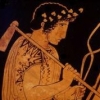
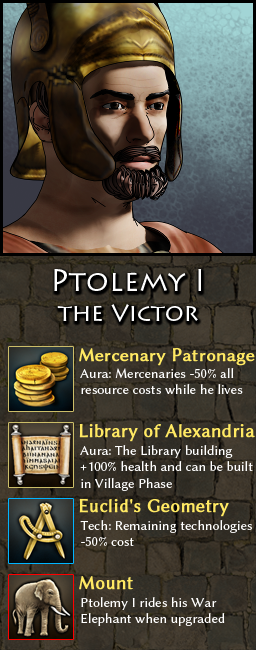
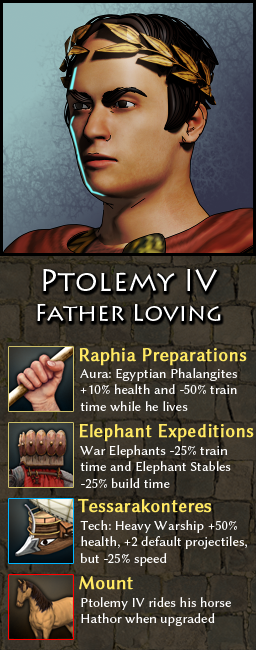
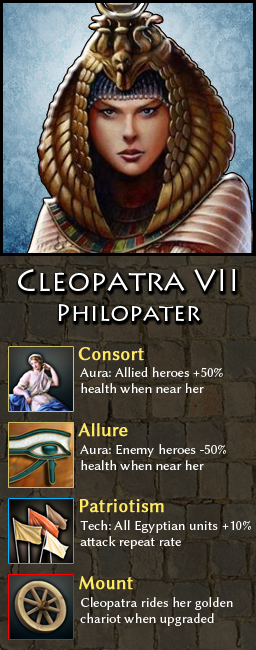
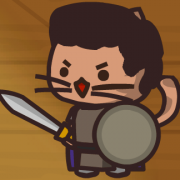
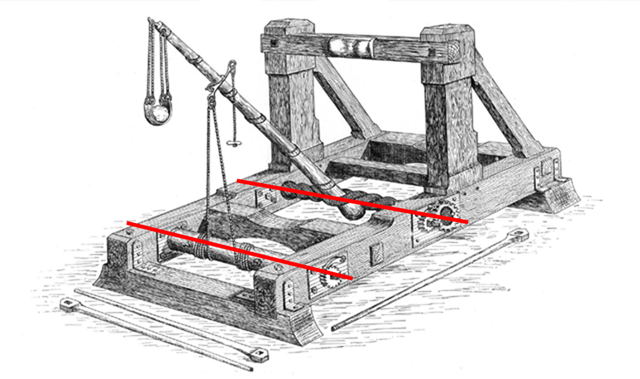
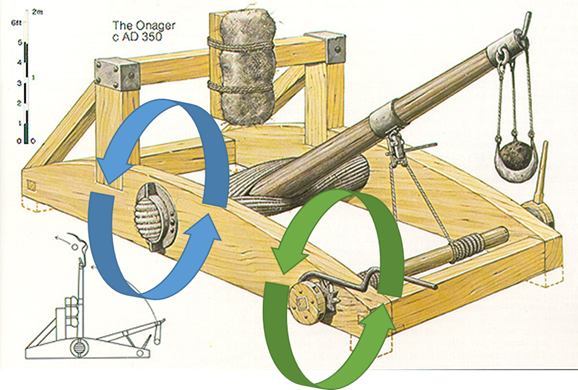
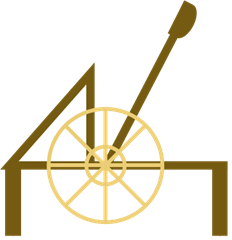


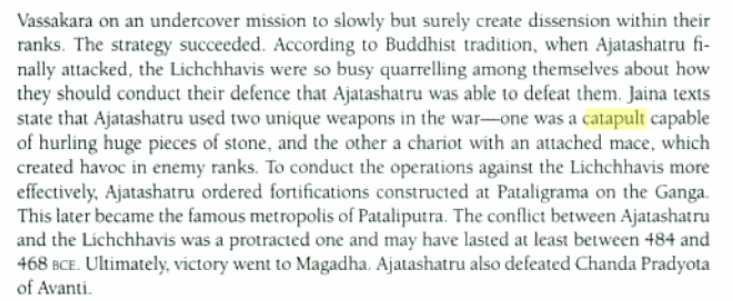
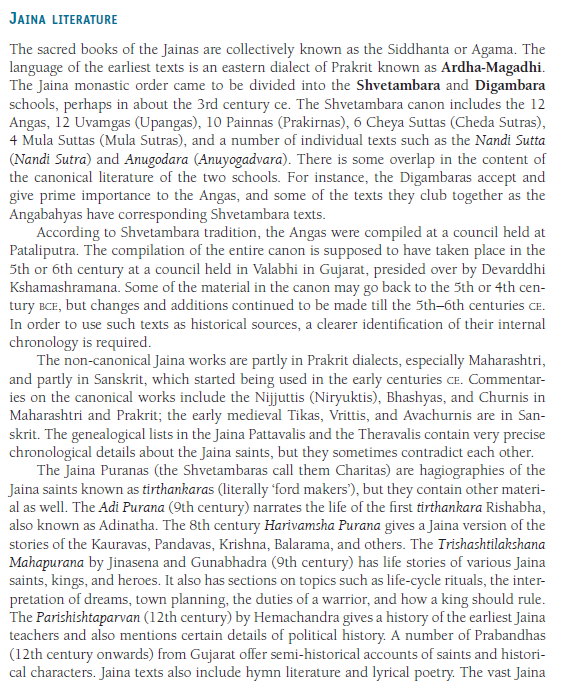
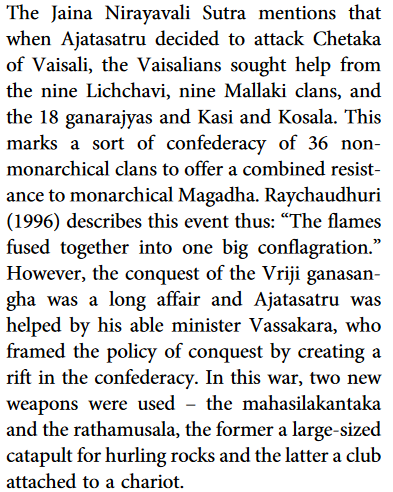


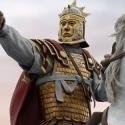
.thumb.png.ce58cea22940c255f5b0a735d5abee36.png)